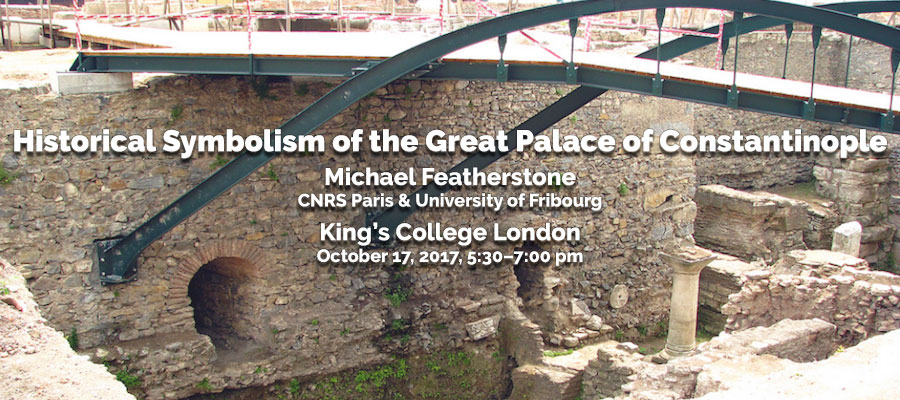Historical Symbolism of the Great Palace of Constantinople, lecture by Michael Featherstone (CNRS Paris and University of Fribourg), King’s College London, October 17, 2017, 5:30–7:00 pm
Like the Roman residence of the emperors on the Palatine, the palace in Constantine’s new capital on the Bosporus was a symbol of the Roman state. By the eighth century a new palace, replacing the old, had taken shape, just as other late antique monumental buildings in the city were abandoned or adapted to the medieval way of life. Though no longer inhabited by the emperors, the old palace buildings retained their symbolic significance and figured in the programme of cultural revival launched by the Macedonian dynasty in the tenth century. The symbolism of the Great Palace survived the Comnenian and Paleologan emperors’ move to Blachernae and even the Ottoman conquest.
Michael Featherstone is chargé de recherche at the CNRS (Paris) and Privatdozent at the University of Fribourg where he obtained his habilitation, following his doctoral studies at Harvard. A specialist of Byzantine history and literature, he has published extensively on Iconoclasm and the cult of icons and on the imperial court and its ceremonial, including the Great Palace at Constantinople and the sources pertaining to it.
